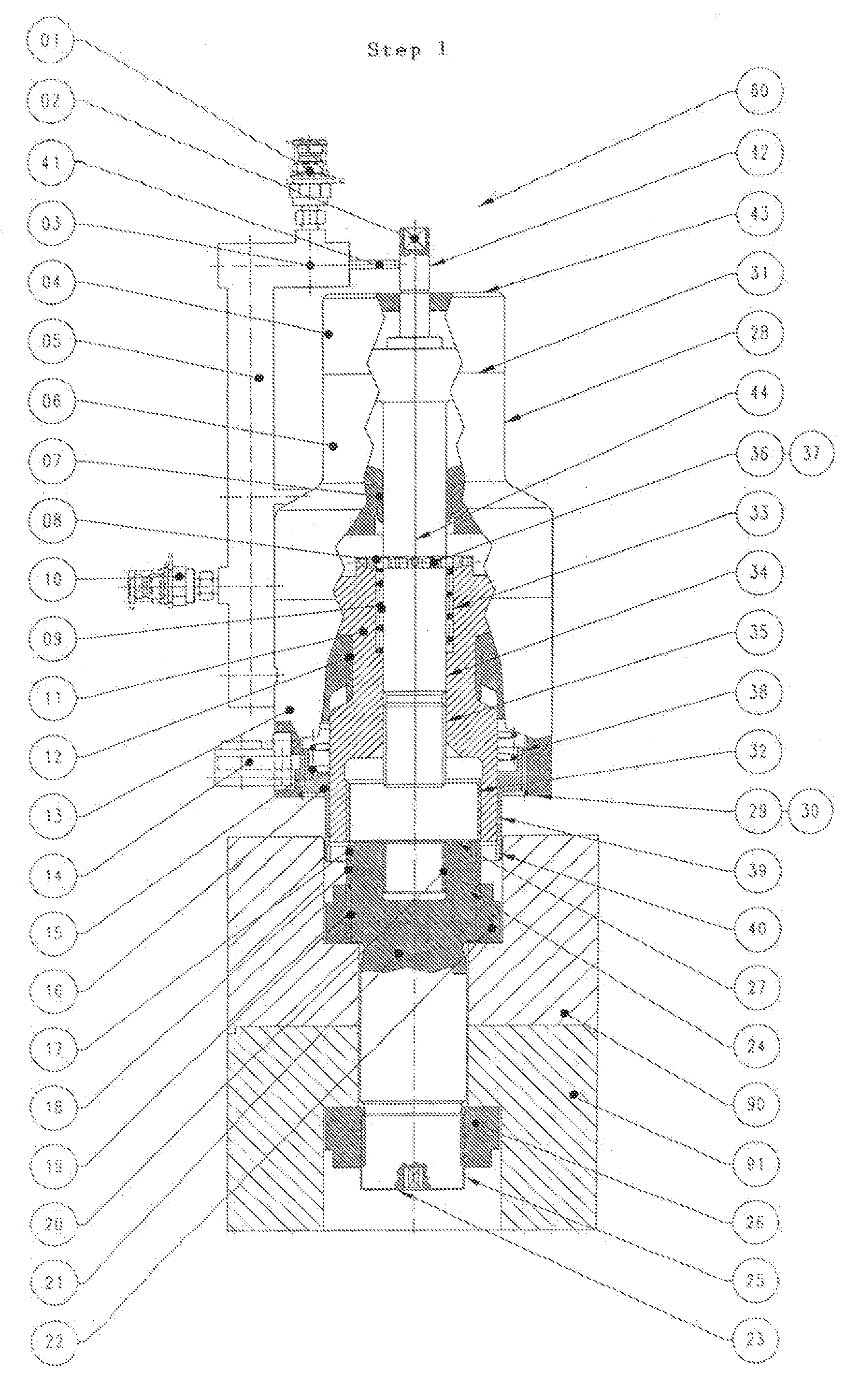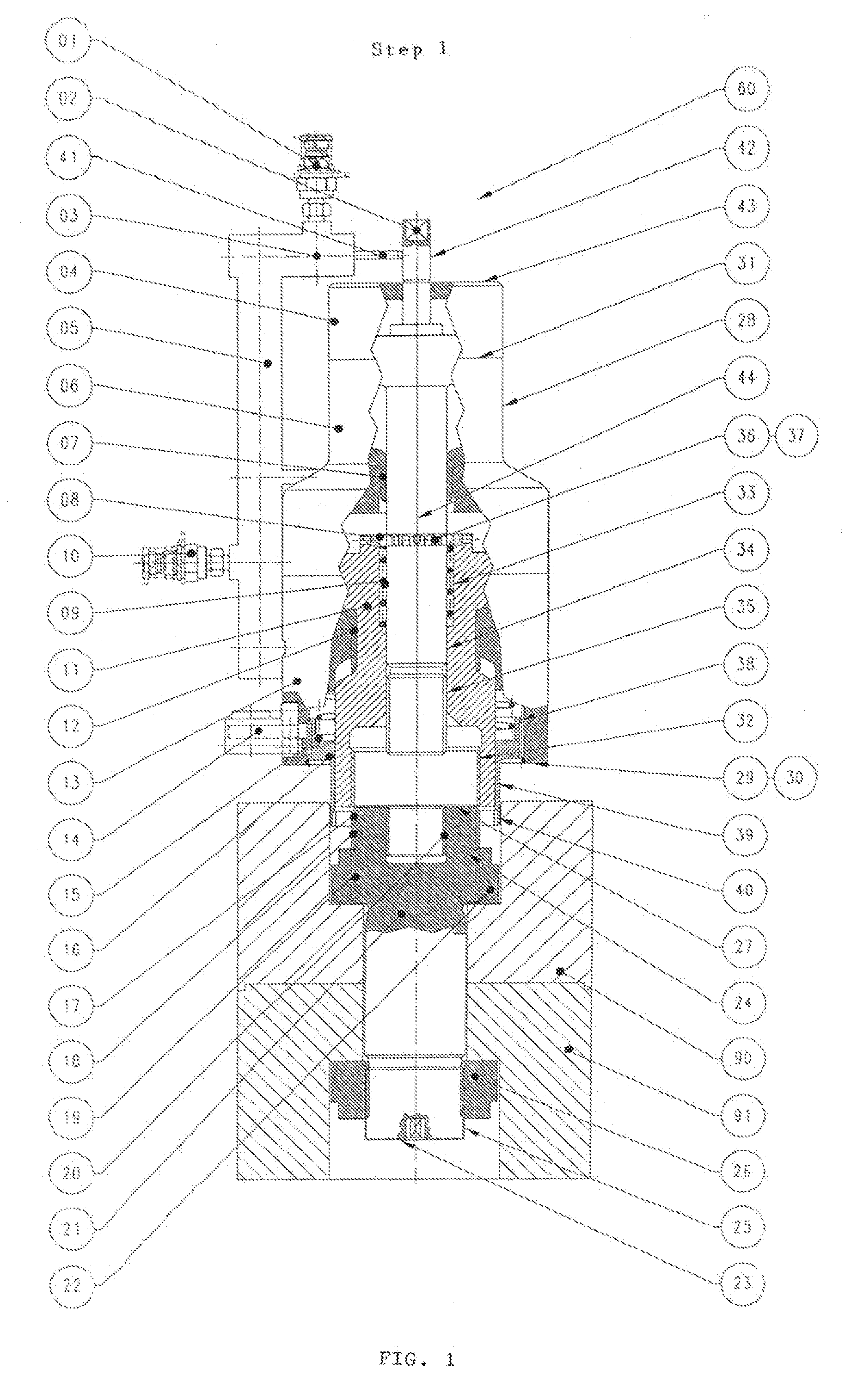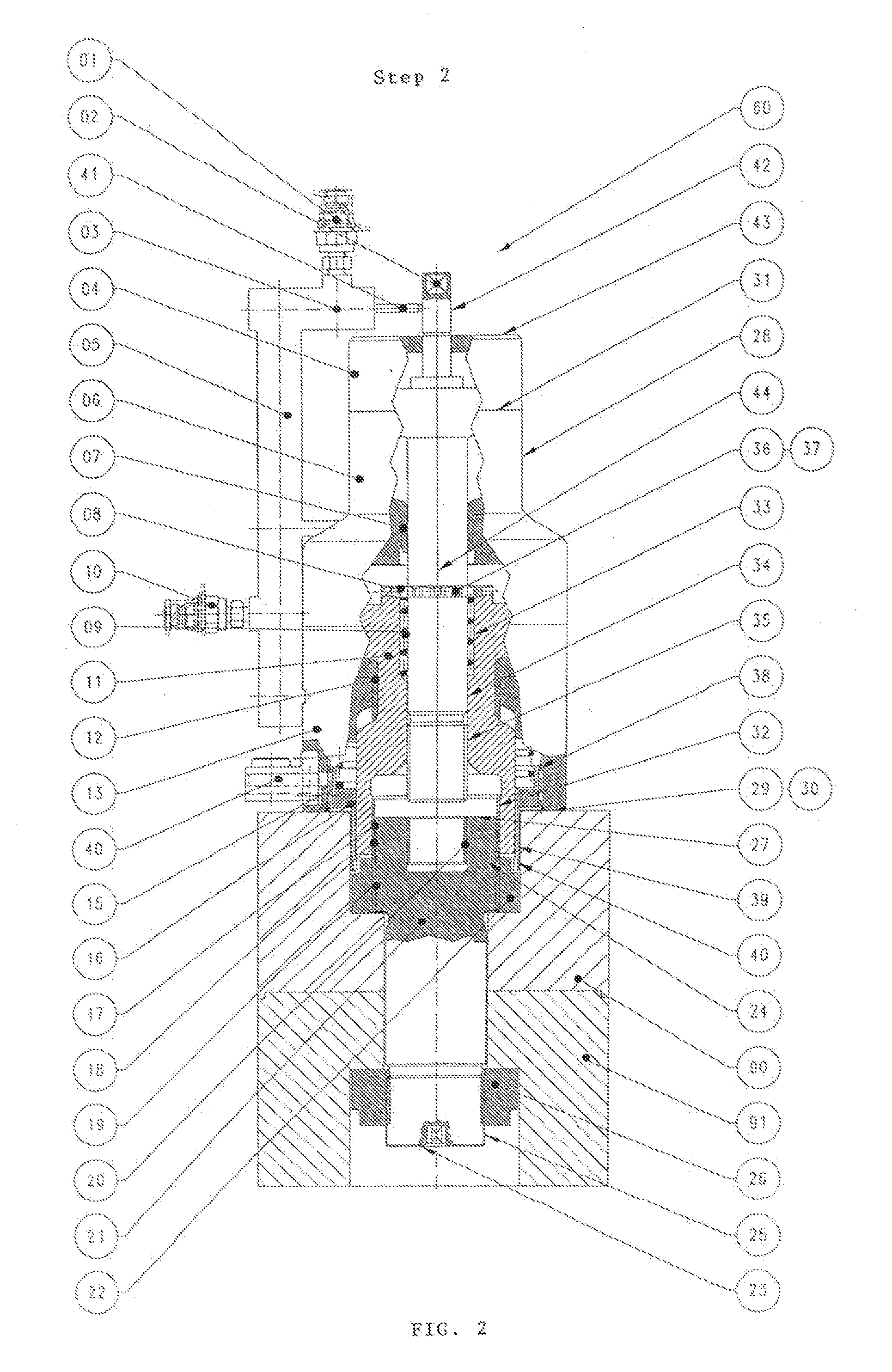Method for tensioning screw bolts, as well as screw bolt and screw bolt tensioning device for carrying out the method
- Summary
- Abstract
- Description
- Claims
- Application Information
AI Technical Summary
Benefits of technology
Problems solved by technology
Method used
Image
Examples
Embodiment Construction
[0020]In the embodiment shown in FIGS. 1 to 5, a screw bolt 21 should clamp two machine parts 90, 91 to each other and therefore be tensioned with a screw bolt tensioning device 60.
[0021]The screw bolt 21 and the screw bolt tensioning device 60 first are described with reference to FIG. 1.
[0022]The screw bolt 21 is sunk into the machine parts 90, 91, which are clamped to each other both with the bolt head 23 and with the bolt end 24. The bolt head 23 includes an external thread 25 onto which a nut 26 is screwed. The nut 26 rests against the lower machine part 91 as shown in the Figures.
[0023]The bolt end 24 includes an external thread 18 and an internal thread 20 extending coaxially thereto from the end face 27, i.e. from the end surface. With respect to the formation and direction of rotation, these threads 18, 20 are independent of each other in the illustrated embodiment and can optimally be adapted to the respective requirements. For example, the threads can also have a conical ...
PUM
| Property | Measurement | Unit |
|---|---|---|
| Fraction | aaaaa | aaaaa |
| Length | aaaaa | aaaaa |
| Time | aaaaa | aaaaa |
Abstract
Description
Claims
Application Information
 Login to View More
Login to View More - R&D
- Intellectual Property
- Life Sciences
- Materials
- Tech Scout
- Unparalleled Data Quality
- Higher Quality Content
- 60% Fewer Hallucinations
Browse by: Latest US Patents, China's latest patents, Technical Efficacy Thesaurus, Application Domain, Technology Topic, Popular Technical Reports.
© 2025 PatSnap. All rights reserved.Legal|Privacy policy|Modern Slavery Act Transparency Statement|Sitemap|About US| Contact US: help@patsnap.com



